
Step 1 - Preparation
- Mow lawn slightly shorter than usual.
- Remove leaf litter, clippings and debris.
- Water lightly the day before if soil is very firm.
- Identify irrigation lines, sprinkler heads and underground services.

Australian lawns face some tough conditions – harsh sun, sudden rain, clay-heavy soils and year-round foot traffic and heavy use. All of this leads to soil compaction, which stops air, water and nutrients from reaching the grass roots.
Regular aeration is one of the most effective lawn care practices to restore lawn health and improve resilience. In this simple guide, you’ll learn what aeration is, why it matters, when to do it and how to aerate your lawn using the right aerating tools and method.

Lawn aeration means creating small holes in the soil to relieve and alleviate soil compaction. These small holes improve water absorption, increase oxygen flow and help nutrients reach the root zone. Whatever your soil type, Australian soils, particularly clay-based ones, benefit greatly from aeration because it helps reduce thatch, improves drainage and encourages deeper, stronger root growth.
Aeration is achieved through two methods: spike aeration, which presses holes into the ground, and core aeration, which removes small plugs of soil for deeper relief.
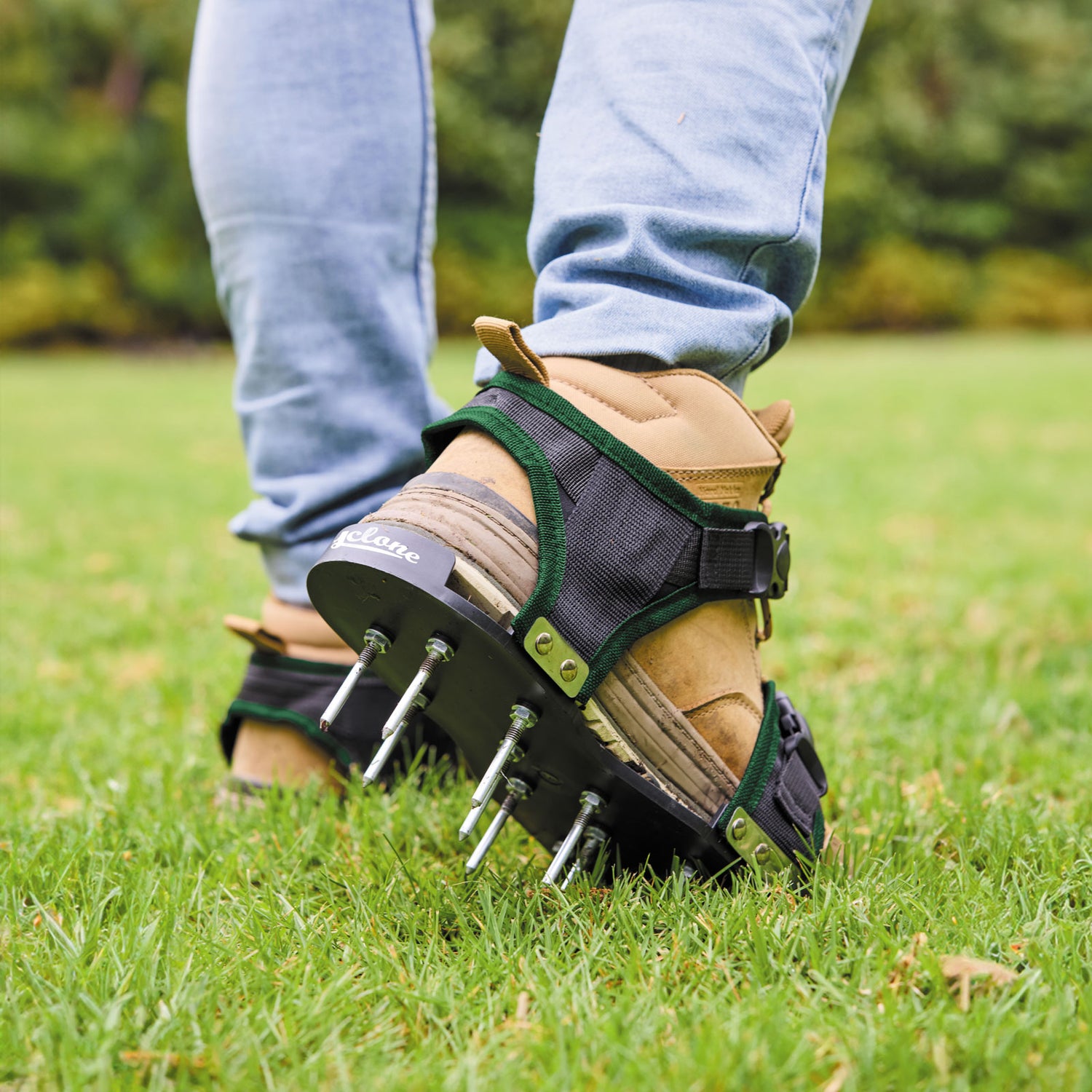
Australia’s climate places pressure on lawns throughout the year. Warm-season grasses like Buffalo, Couch, Kikuyu and Zoysia cope well with heat but still suffer when soil becomes compacted.
Heavy rainfall can create pooling water, while dry periods lead to thinning turf. Signs your lawn is ready for aeration include visible footprints, hard compacted ground, compacted soils, slow drainage and patchy or thinning spots, especially in high-traffic areas and during heavy use.
Lawn aeration improves root development, nutrient uptake and overall lawn strength, helping your grass better withstand seasonal changes.
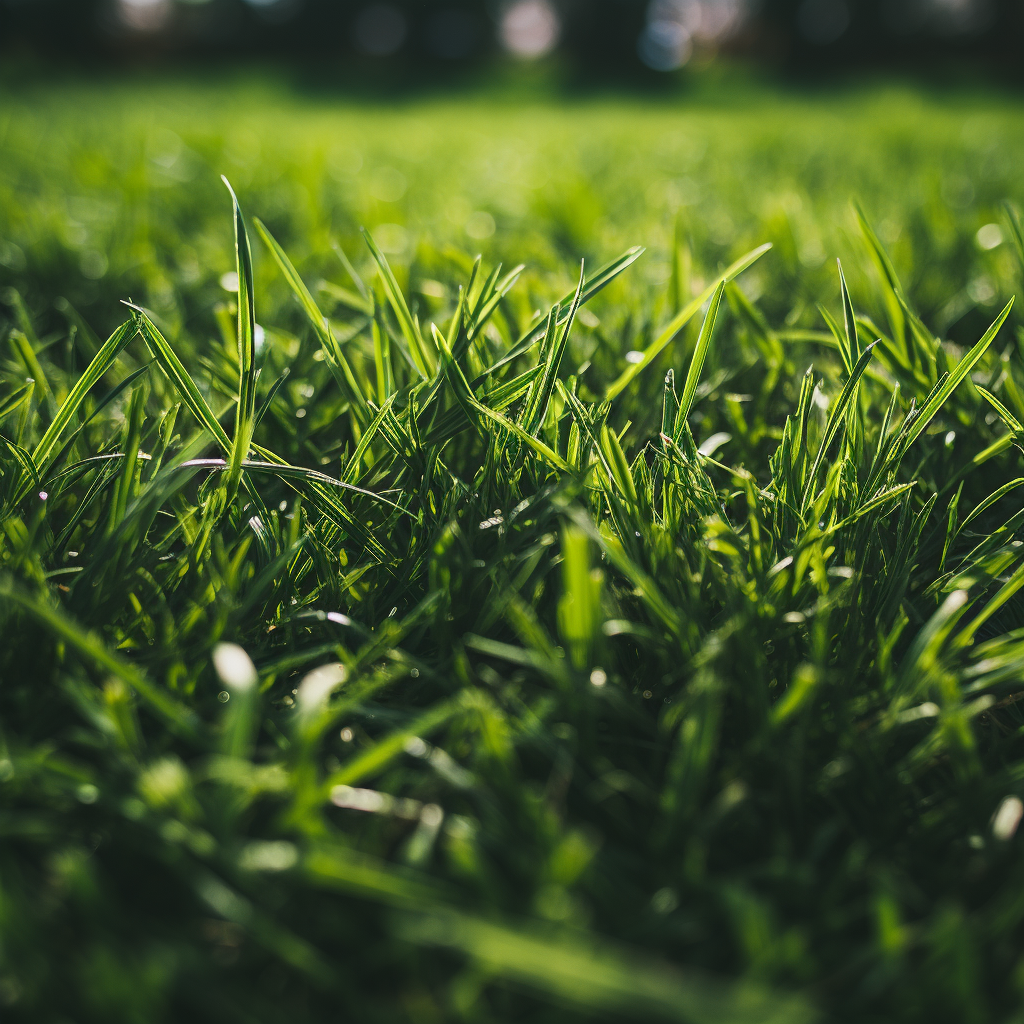
For best results, aerate when your lawn is actively growing.
For warm-season grasses such as Buffalo, Couch, Kikuyu and Zoysia the best time to aerate is late spring to early summer.
For cool-season grasses such as Tall Fescue and Ryegrass the best time to aerate is early autumn or early spring.
Soil should be slightly moist, not too dry or overly saturated. Most Australian lawns benefit from annual aeration, while lawns with clay soils or high traffic may need more frequent care.
Step-by-Step Guide for Home Gardeners

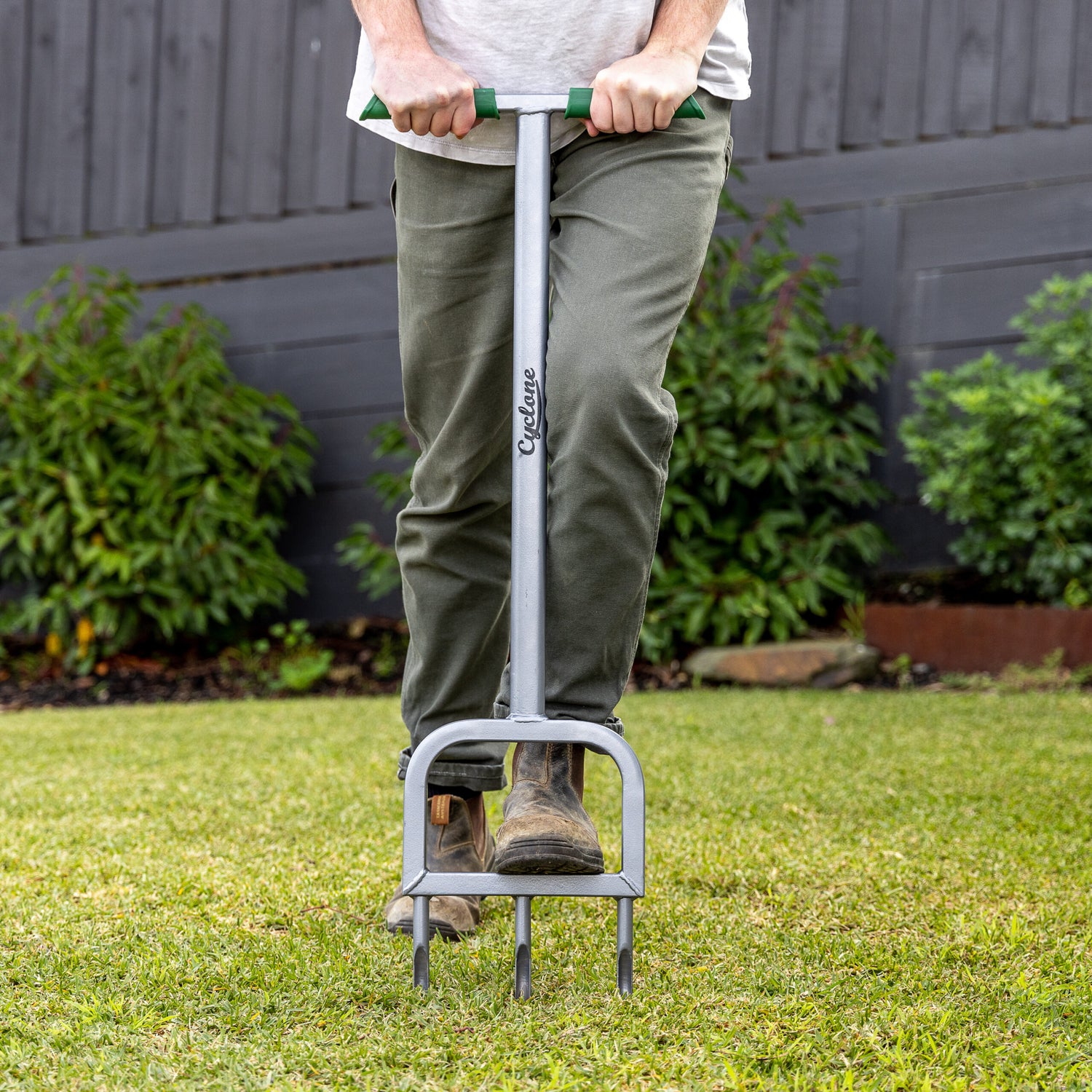
Core aeration: Best for compacted or clay-heavy lawns. Hollow tines remove plugs of soil and allow for deeper oxygen penetration.
Spike aeration: Solid tines punch holes into the soil. Suitable for light maintenance but not ideal for heavy compaction.

Work across the lawn in steady passes, spacing holes about 8–10 cm apart. For heavily compacted areas, make a second pass in another direction. Focus on high-traffic areas such as paths, play zones and entertaining spaces.
For smaller areas, manual aerators work well – like Cyclone’s Aeration Sandals or 3-Tine Coring Lawn Aerator. While mechanical aerators are ideal for larger areas or heavily compacted lawns.
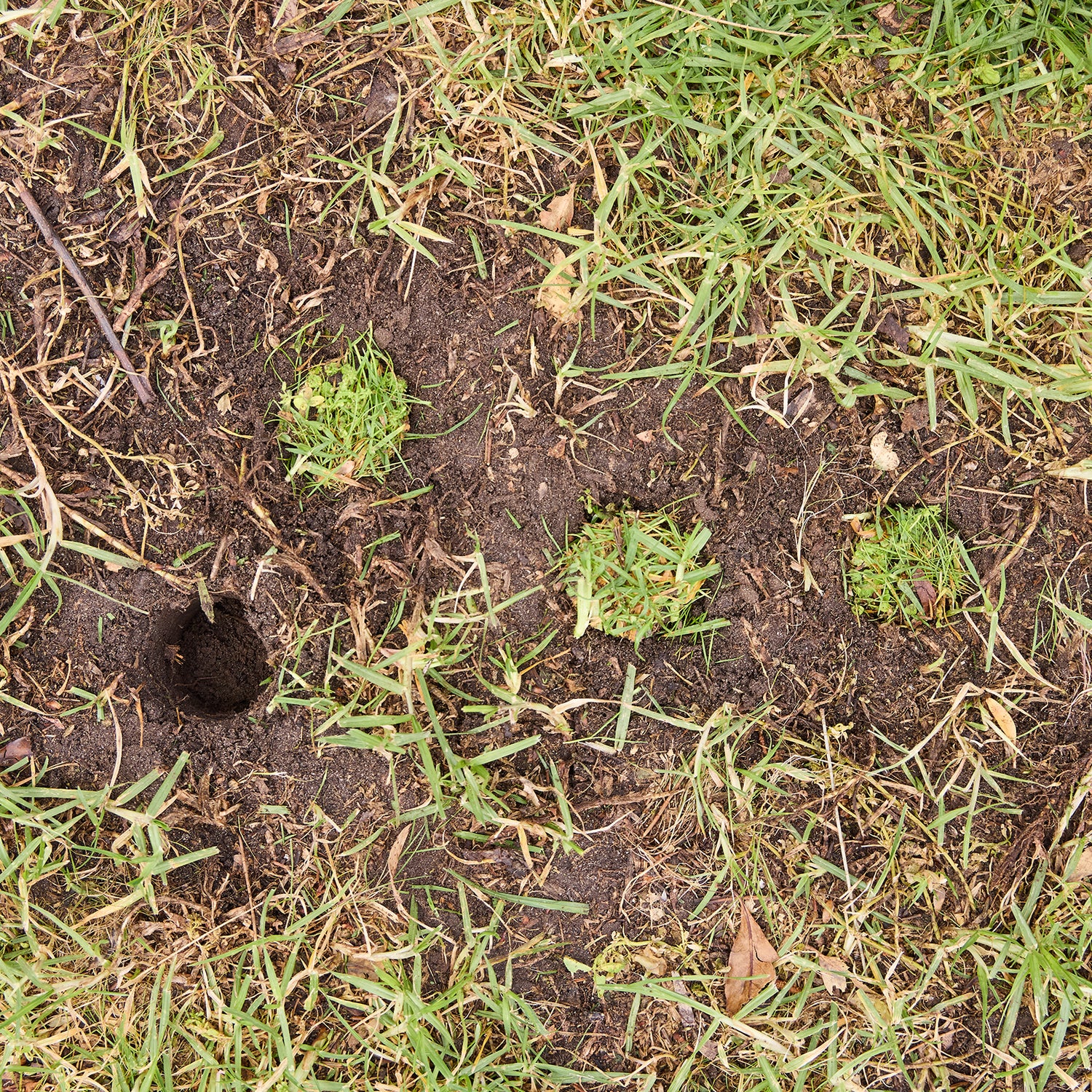
Leave soil plugs on the surface; they break down naturally and help return nutrients to the soil. Water the lawn immediately and apply a quality slow release fertiliser to support healthy root growth.
Limit foot traffic for a few days while the lawn begins to recover.
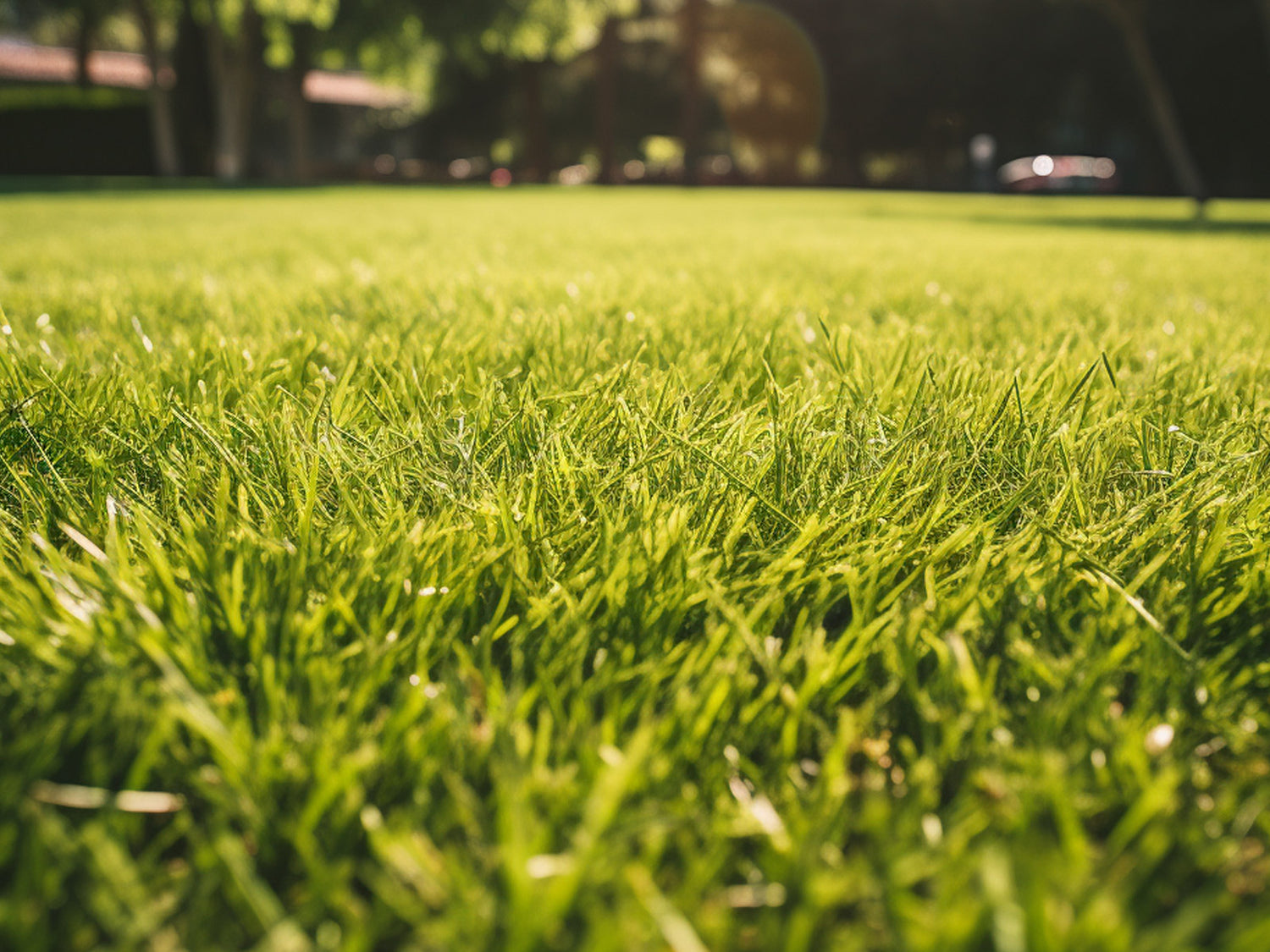
Aeration is one of the simplest and most effective ways to boost your lawn’s health and resilience. By choosing the right tools, method and timing, you’ll help your grass grow stronger, healthier and better equipped for Australian conditions.
Add aeration to your annual garden care routine to enjoy a lush lawn all year round!
Want to learn more about using the right tool to keep up your lawn maintenance? We’ve got you covered with our top tips.
The Right Tools for Aeration
Suitable aeration tools include a garden fork, manual core aerator, spiked aeration sandals or a mechanical aerator for larger lawns. Choose a tool based on lawn size and soil condition. Safety gear such as gloves and sturdy footwear is recommended and remember to check for irrigation systems before starting.
Watch Outs & Troubleshooting
Special Considerations for Australian Suburbs & Conditions
Clay soils, common in many suburban gardens, benefit from more frequent aeration. Coastal, tropical and inland regions all experience different growth cycles, so adjust timing to suit your local climate. Lawns with pets, children or regular gatherings will need targeted aeration to maintain density and health.